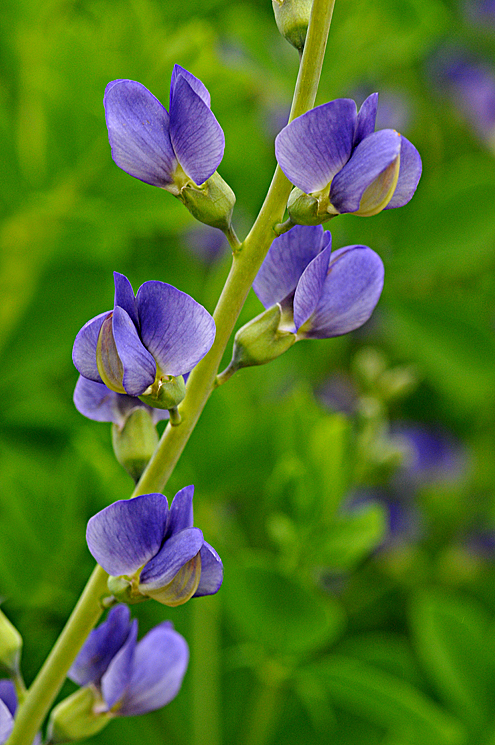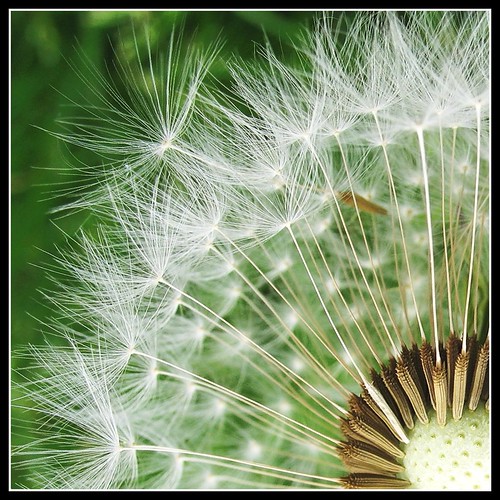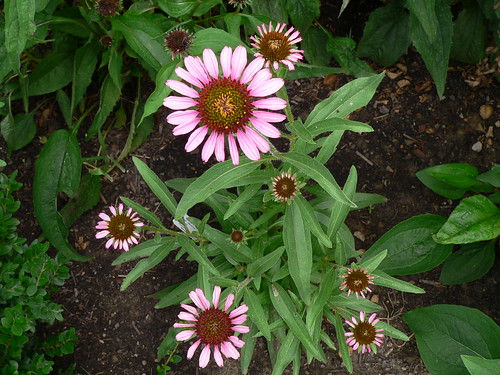TheGardenLady readers might like to see a list of the flowers growing in my garden this year.
A list of most of the Plants in TheGardenLady’s garden
Perennials Continue reading “Flowers Growing in the TheGardenLady’s Garden”

In depth gardening advice from an expert gardener
TheGardenLady readers might like to see a list of the flowers growing in my garden this year.
A list of most of the Plants in TheGardenLady’s garden
Perennials Continue reading “Flowers Growing in the TheGardenLady’s Garden”
In December sugarplums may have danced in one’s head. But in January it is the FLOWER SHOWS that plant lovers dream about. These Flower Shows will soon open their doors to showcase the magic of flowers. And the 2014 Flower Shows look like they will be winners.
You don’t want to miss your local or state flower show. And if you have cabin fever during this long cold winter, think about planning to follow the flower show trail around the world.
Every year this GardenLady gets to the Philadelphia Flower Show, which is touted to be the largest indoor flower show in the world. This year’s Art Themed Flower Show, called ARTiculture will run March 1-9th. To avoid crowds it is advised to come when the doors open or around dinnertime.
A reader of TheGardenLady blog recently visited Kauai and sent in photos of some of the plants growing on the island. A highlight was visiting Kauai’s Limahuli Garden and Preserve which grows native plants of the island and teaches about Hawaiian history in relation to the native plants. As you walk through this beautiful botanical garden you have gorgeous tropical scenery. This was the location that served as the Bali Hai backdrop in the movie “South Pacific.” Limahuli covers almost 1000 acres. Though much of it is restricted for research and preservation, one can walk a 3/4 mile long trail through the demonstration garden. Read more about this garden here or check out this page for flowers in Hawaii.
This photo of canned fruits was taken in the town of Levidi in the Peloponnese.
My daughter and my son with his family visited Greece this August. They spent a week with friends on the island of Santorini, a volcanic island where there are 600 species of plant life. The main edible crops growing on Santorini are grapes and a unique type of tomato called the Santorini tomato. See here. My son and his family then traveled through mainland Greece after my daughter left for Eastern Europe.
The photo of the goat was taken in the village of Elaiochori in the Peleponnese. Elaiochori is where my son’s friend’s father is from. This farm was just down the road from where a US trained architect, is building his retirement home.
This bucolic scene was taken outside a small organic winery we visited in the village of Kapsia in the wine region of Mantinia, Peloponnese.
From Santorini Sempervivum
Before they left for Greece, I asked my children to please take photos of any flora and perhaps fauna in Greece for TheGardenLady blog. Here are some of the photos. A few of the plants TheGardenLady can not identify. Perhaps my readers could help.
Flower bed at Topkapi Palace, Istanbul by John Picken
In spite of the number of lovely flowers that I have already growing in my garden, this GardenLady always dreams of more flowers. Which ones should I add to the garden when I divide and transplant or give away those that have overgrown their stay? As I have been going through some catalogs deciding on some more bulbs that I want to add to my garden, I realize that so many of my favorite flowers come from Turkey. For example, tulips are native to Turkey as are some of the fall blooming crocuses. See here. Now that Liquid Fence stops deer and rabbits from eating my tulips and crocuses, I am ordering more of both of these bulbs.
When this GardenLady traveled through Turkey in the early 1970s, especially driving through the eastern part of that beautiful country, I was amazed with the number of wild flowers I saw there. They were so many wildflowers, that I decided I would concentrate on seeing how many different flowers of one color that I could find each day I traveled. This was not a difficult undertaking, the wild flowers were so prolific. I had a cup holder in the car and I would fill a cup with a different color of flowers daily.
Though cutting the flowers does not hurt the plants, since this is what one does when one dead heads to encourage more blooms, if everyone did what I did, there would be few wildflowers for others to admire. Though I did this before this type of thing was prohibited, we know better these days and I would never recommend picking wildflowers. I recommend just looking and photographing the flowers. I wished I had a book with me for identifying flowers so I could know what the names of those flowers were. These days, I wonder if there are good books in English on the names of the Turkish flowers.
This GardenLady loves Spring- when the world looks so lovely with all the flowers emerging from their sleep. l would like to share photos of some of the flowers that are in bloom in TheGardenLady’s spring garden.
(1) Hellebores with Brunnera and Greater Celandine (see here and here) Greater Celandine is becoming invasive in some areas (see here)
(2) Hellebores
(3) Korean Spice Bush or Mayflower Viburnum Viburnum Carlessi (see here)
(4) Virginia bluebells Mertensia virginica (see here)
What can you do when you can’t get out into your garden?

Our friends at How to Cope with Pain wrote this week about a website Peaceful Walks, which offers downloads of nature “walks” for sale. As How to Cope with Pain says, these won’t replace getting out into your garden or the outdoors, but they are beautiful photography and relaxing to watch. Here is a review.
Happy New Year- 2010. This is the time of year that plant associations are choosing the best of the best new plants for the year.
AAS the All America Selections has chosen 4 plants for 2010 that they count as award winning. They recommend these plants for gardeners to plant in their gardens.

Mesa Flower
The first is a Gaillardia x grandiflora or blanket flower called Gaillardia F1 ‘Mesa Yellow’. This is the first hybrid blanket flower that has a controlled plant habit that does not get tall, loose and floppy; starts blooming a few weeks early and blooms all summer; and is relatively maintenance free.

Twinny Peach
The second AAS Award winner is Antirrhinum majus Snapdragon F1 ‘Twinny Peach’. It is a snapdragon without the jaws that snap- what they call a double or butterfly flower form. It is a blend of peach tone colors that are unique. These snapdragons are easy to grow, will flower all season with little care and has exhibited some heat tolerance.

Endurio Sky Blue Marien
The third AAS winner is Viola cornuta F1’Endurio Sky Blue Marien”. This delicate looking, spreading/ mounding sky -blue flowering plant AAS says is tough as nails.

Zahara Starlight Rose
The last AAS winner is the Zinnia marylandica ‘Zahara Starlight Rose.’ This is a bicolor zinnia that has resistance to leaf spot and mildew- two diseases of zinnias that are ugly and can kill the plants. Try to always buy disease resistant plants. Besides being disease resistant, Zahara Starlight Rose provides generous color all season, is heat and drought tolerant, easy to grow in gardens. AAS says that this is a ” perfect plant for the novice or experienced gardener because it is so undemanding with a maximum number of blooms.”

Baptisia australis blue false indigo
The Perennial Plant Association has chosen Baptisia australis blue false indigo as the perennial plant of 2010. This native American plant is an excellent choice for sunny gardens all over the continent. It attracts butterflies and makes a great cut flower.
First Frost
The 2010 Hosta of the year is called ‘First Frost.’ Hosta First Frost features intense blue-green leaves with irregular, jetting, yellow margins that turn white in summer. A beautiful plant that looks great until the first frost, thus the name. The Hosta Society also has named the Hosta of the year for 2011. This is called ‘Praying Hands.’

With the dawn of a new year and the approach of spring this is the perfect time to do some internal spring cleaning. Clearing out the buildup of winter feasts is a great way to jump start your system and ensure optimal health.

TheGardenLady has invited people with horticultural interests and expertise to contribute posts to this blog. The following post was submitted by Christy Baker, a certified Family Herbalist and Consulting Herbalist.  Christy is currently pursuing a certificate in Horticulture Therapy and a second Master’s in Landscape Architecture.
With a 30 million year history originating in Eurasia, Dandelion, Taraxacum Officinale, was once revered for its healing properties. Today however, most people think of it as a brightly colored nuisance, especially gardeners; the self fertilizing herbaceous plant does a very good job evading eviction. Instead of relentlessly fighting the Dandelion, try embracing its presence, for as many herbalists and naturalists know this small unassuming plant is a nutritious wonder.
Continue reading “Dandelion: The Unappreciated Medicinal Warrior”

Every year one of the best plant conferences on the East Coast is the Perennial Plant Conference held in the fall at Swarthmore College. This conference is co-sponsored by Chanticleer Garden, Longwood Gardens, The Hardy Plant Society/Mid Atlantic Group, The Pennsylvania Horticultural Society and The Scott Arboretum of Swarthmore College. (If you haven’t visited Chanticleer, Longwood Gardens and The Scott Arboretum, you should. Each garden is fantastic in its own right.)
This year on October 16th a group of friends and this Garden Lady joined what looked like a sell out crowd for this 2009’s excellent, informative conference. I hope to be writing about what some of the excellent speakers had to say in future posts.
Right now I want to talk about one of my favorite features at the conference and that is what is called the Promising Plant Forum. Five people who are either from top nurseries or who work at top gardens give a 7 minute presentation of 3 of their favorite choices for best new plant or underused excellent plant for your garden.
It was interesting that of the 15 plants recommended, 4 were Echinacea plants. Echinacea which are commonly called purple coneflowers are native to eastern and central North America, where they are found growing in moist to dry prairies and open wooded areas. Echinacea are generally long lived plants that have large, showy flower heads and are in bloom from early to late summer.